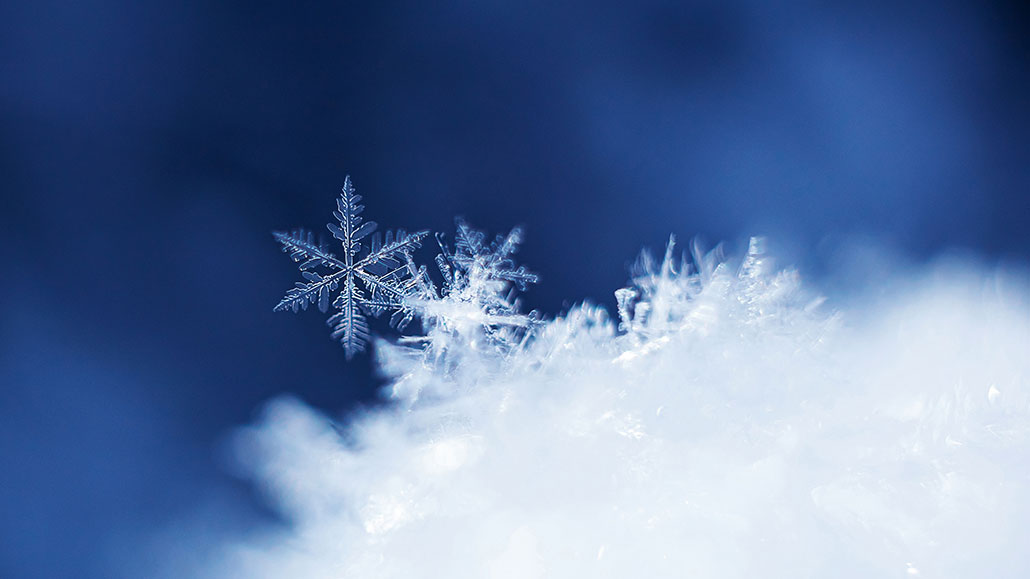Let’s learn about snow
Snow is frozen water — but it’s not an ice cube. Why? Chemistry

Snowflakes have a six-sided shape — one that forms because of the chemistry of water.
Cavan Images/iStock/Getty Images Plus
What’s winter about? Well, if you live in a place that gets cold enough, winter is about snow. Big, fat fluffy flakes that fall from the sky and pile up in freezing mounds.
Snow is frozen water, of course. But snowflakes aren’t tiny ice cubes. Instead, they are what happen when water vapor turns straight into ice. Scientists have successfully built snowflakes from scratch, like Elsa in Frozen (minus the magic, of course). But unlike Elsa’s skills, snow formation isn’t instant. The snowflakes build up as water molecules tumble around in the sky. Each flake usually takes between 15 minutes and an hour to form. Flakes also form best around a nucleus — a tiny speck of dust that the freezing water molecules can cling to.
Some places on Earth never get snow (though every U.S. state gets it at some point). But others are coated in ice year-round. These include the tops of mountains where glaciers — masses of ice that form when snow packs down over years — can be found. And then there’s Antarctica, where 97.6 percent of the continent is covered by snow and ice all year.
Earth is not the only planet with snow and ice. Saturn’s moon Enceladus is constantly covered in snow. And scientists think that melting snow might have formed the dry gullies that line the surface of Mars.
Want to know more? We’ve got some stories to get you started:
Frozen’s ice queen commands ice and snow — maybe we can too: In the Frozen movies, Elsa magically manipulates snow and ice. But scientists, too, make snowflakes. If they reinforce it, architects can build with ice and snow. (11/21/2019) Readability: 6
The many faces of snowstorms: There are many different types of winter storms. How do they work? (2/14/2019) Readability: 7
Climate change threatens future Winter Olympics: Higher temperatures, less snow mean many former Winter Olympics sites soon will no longer qualify to host future games, concludes a new analysis. (2/19/2018) Readability: 8.3
Explore more
Explainer: The making of a snowflake
Explainer: What is thundersnow?
‘Watermelon’ snow is helping melt glaciers
Is weather control a dream or nightmare?
How much water is in snow? Not nearly as much as you think. Pop some snow in a jar, bring it inside, and find out! All you need is a jar, some snow and a ruler.







